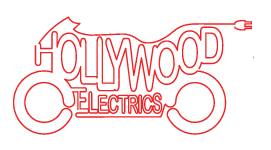
Electric Motorcycle Tech: the Truth about Range
I got a call from LA Times moto-journalist Charles Fleming as he was researching his recent article about Zero Motorcycles. I could tell he was impressed with his latest experience on the 2015 Zero SR, and he asked me what the biggest hurdle was for convincing people to buy these fantastic bikes.
I can think of a few non-sensical reasons that I hear as to why someone "would never" ride an electric motorcycle, but one of the most frequent, ignorant comments is that they won't ride an electric motorcycle until it has a range of 500 miles to a charge. I challenge anyone to name a ICE (internal combustion engine) motorcycle that has a factory range of 500 miles! In fact, the stock 2015 Zero S, has more autonomy than many ICE bikes, and significantly more than the popular Harley Sportster and Ducati Hypermotard.
According to the US Department of Transportation Federal Highway Administration, the average vehicle traveled less than 29 miles per day, so why is it then that everyone is so hung up on Electric Motorcycle range when these bikes can travel over five times that distance on a single charge?
A big part of it is our resistance to change. We have grown so accustomed to our typical routine that stopping at the gas station to fill up has been universally accepted as a necessary evil. It is not convenient to have to stop for gas and I know it doesn't occur to most what a luxury it is to not have to stop to fill up. What if I told you, you could ride your motorcycle to work and it would fill itself up while it was there, and then you could ride it home and it would fill itself up again while it was sitting in your garage? And all this at a fraction of the price for what it costs you to fill up at the gas station! Sounds too good to be true? I, and many other electric motorcycle owners, have been living this dream for years!
The next complication is the speed of charging. Today's electric motorcycles and the infrastructure to support them, make long distance riding less than ideal, (unless your Terry Hershner). Adding extra chargers to the bikes adds weight and cost, especially considering that fast charging is not a feature that most people will need everyday. And frankly, carrying around chargers and plugging into the grid is akin to carrying around a refinery and filling up on crude oil. That is why DC fast charging is the future of electric vehicle charging infrastructure and why there needs to be a focused effort on developing fast charging standards so that all electric vehicles can take advantage of it.
100 years ago, there was no such thing as gas stations, you'd go to the hardware store to buy a gallon of gas, and the fastest way between far cities was by horse, not by car. So, it's not hard to believe that in a few years, the fast charging infrastructure will obsolete the current "slow" EV charging standards making even cross country trips simple. Tesla has already made some headway with their Model S and Supercharger Network which has grown to nearly 400 stations worldwide in just 2.5 years. Once DC fast charging standards have matured a bit more, there is no doubt that electric motorcycles will be able to harness the convenience of its use and charging will take minutes, not hours.
Until fast charging infrastructure catches up, there are interim solutions that can help us leverage the existing charging infrastructure around town. The most common EV charging stations are equipped with J1772 connectors. The Zero Motorcycle's 1300W onboard charger can take nearly 10 hours to charge up a Zero S with ZF12.5 power pack, limiting the performance of the 7kW capable J1772 station. Although Zero sells an accessory quick charger, one of those won't even cut your charge time in half as they barely put out 900W of power. Our 2500W Elcon charger kit has become a popular solution for those wishing to travel a bit further and maximize the use of the J1772 stations. With two Elcon chargers in addition to the onboard charger, it is possible to charge the bike at 6.3kW cutting your charge time down to 2 hours! This is still not anywhere near DC fast charging speeds, but its a reliable solution that lets you take full advantage of the thousands of J1772 stations around the country.
Enjoy the Ride,
Harlan Flagg

 USD
USD
 EUR
EUR
 AUD
AUD
 GBP
GBP
 JPY
JPY
